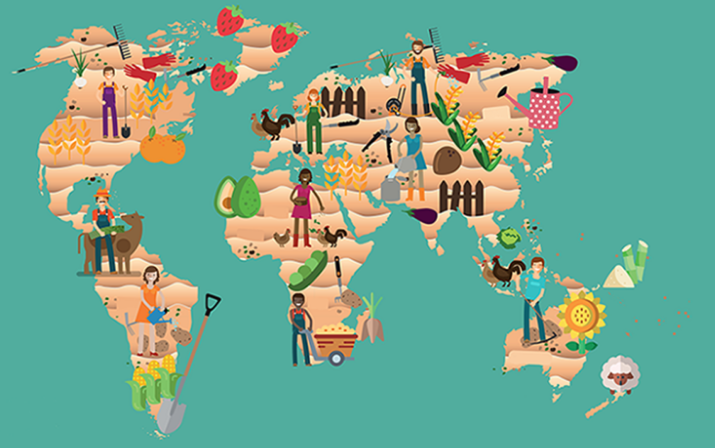The World Day to Combat Desertification and Drought is observed every year June 17 to promote public awareness of international efforts to combat desertification
AGENCIES
In nine out of past 15 years, about 100 districts of the country have witnessed a drought like-situation, triggered by failure of south-west monsoon. This frequency is now increasing in Bihar, Uttar Pradesh, Karnataka, Kerala, Maharashtra, among a few other states.
The Union Ministry of Agriculture and Farmers Welfare defines drought as water shortage for human, cattle and agriculture consumption, resulting in economic losses, primarily in agriculture. The ministry classifies drought into meteorological, hydrological and agricultural. India might be headed for a meteorological drought this year. It refers to a condition with rainfall deficit to below 19 per cent of normal rainfall, thus failing to sustain moisture level of soil.
Four out of nine droughts in the last 15 years were severe droughts that jeopardised country’s food security. This year, the situation is comparatively grim as those states that produce about two-third of country’s food grain are severely impacted and may lead to a food crisis.
The World Day to Combat Desertification and Drought is observed every year June 17 to promote public awareness of international efforts to combat desertification. The day is a unique moment to remind everyone that land degradation neutrality is achievable through problem-solving, strong community involvement and co-operation at all levels.
On the occasion of the 25th anniversary of the Convention and the World Day to Combat Desertification in 2019, the United Nations Convention to Combat Desertification (UNCCD) celebrates the 25 years of progress made by countries on sustainable land management. At the same time, the UNCCD looks at the broad picture of the next 25 years where the world will achieve land degradation neutrality.
What do we envisage in a world where land degradation neutrality provides a solid basis for poverty reduction, food, water security as well as climate change mitigation and adaptation?
The anniversary campaign runs under the slogan ‘Let’s grow the future together’ supported by the global observance of WDCD and the 25th anniversary of the Convention June 17, 2019 in Ankara, hosted by the government of Turkey.
The 2030 Agenda for Sustainable Development declares –“we are determined to protect the planet from degradation, including through sustainable consumption and production, sustainably managing its natural resources and taking urgent action on climate change, so that it can support the needs of the present and future generations”. Specifically, Goal 15 states our resolve to halt and reverse land degradation.
KEY ISSUES (BOX)
- Land and Drought — By 2025, 1.8 billion people will experience absolute water scarcity, and two-third of the world will be living under water-stressed conditions. A complex and slowly encroaching natural hazard with significant and pervasive socio-economic and environmental impacts that to cause more deaths and displace more people than any other natural disaster.
- Land and Human Security — By 2045 some 135 million people may be displaced as a result of desertification. Achieving land degradation neutrality by rehabilitating already degraded land, scaling up sustainable land management and accelerating restoration initiatives is a pathway to greater resilience and security for all.
- Land and Climate — Restoring the soils of degraded ecosystems has the potential to store up to 3 billion tons of carbon annually. The land use sector represents almost 25% of total global emissions. Its rehabilitation and sustainable management is critical to combating climate change.
ABOUT DESERTIFICATION
- Desertification is the degradation of land in arid, semi-arid and dry sub-humid areas. It is caused primarily by human activities and climatic variations.
- Desertification does not refer to the expansion of existing deserts. It occurs because dry land ecosystems, which cover over one third of the world’s land area, are extremely vulnerable to over exploitation and inappropriate land use.
- Poverty, political instability, deforestation, overgrazing and bad irrigation practices can all undermine the productivity of the land.
